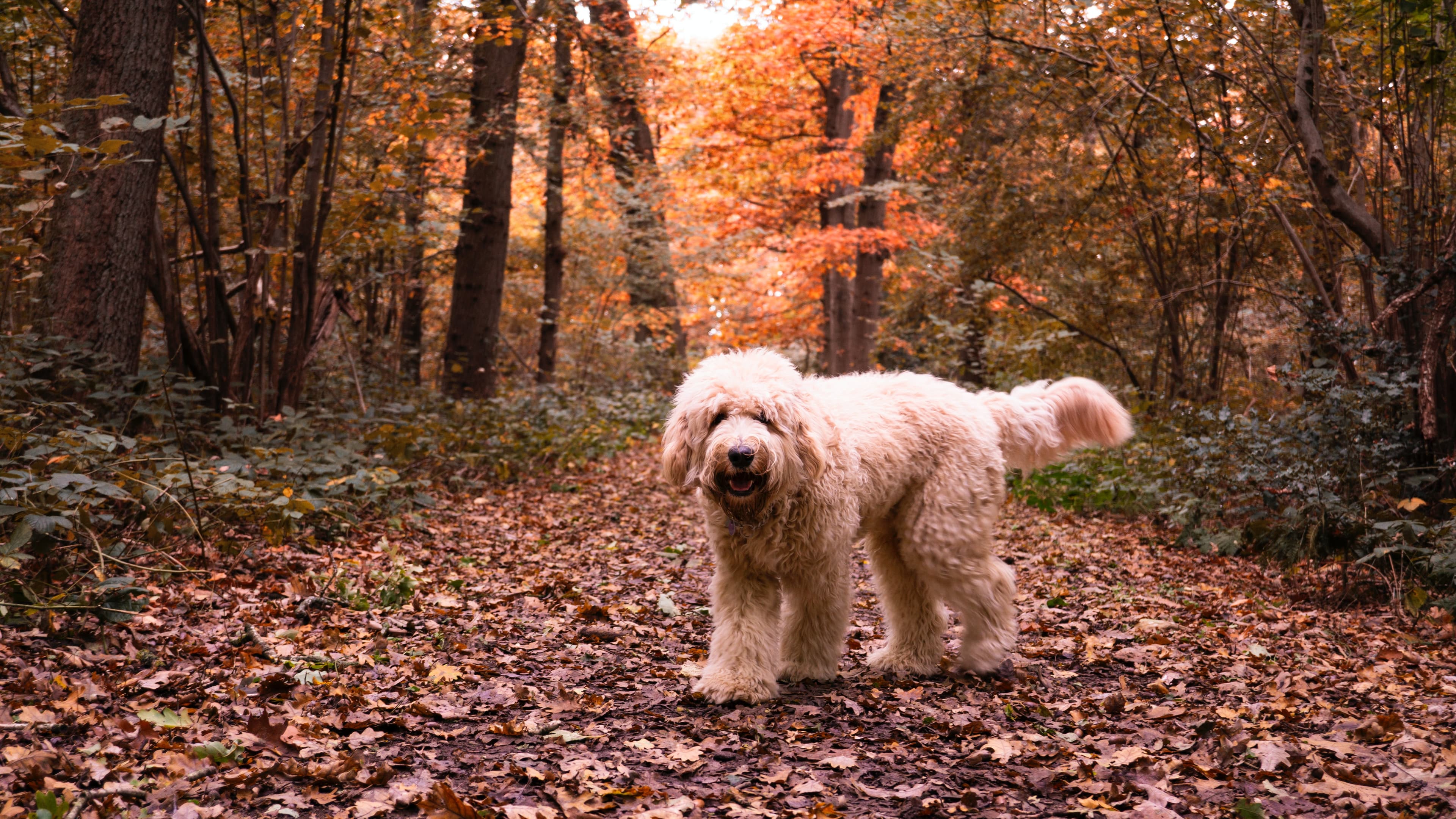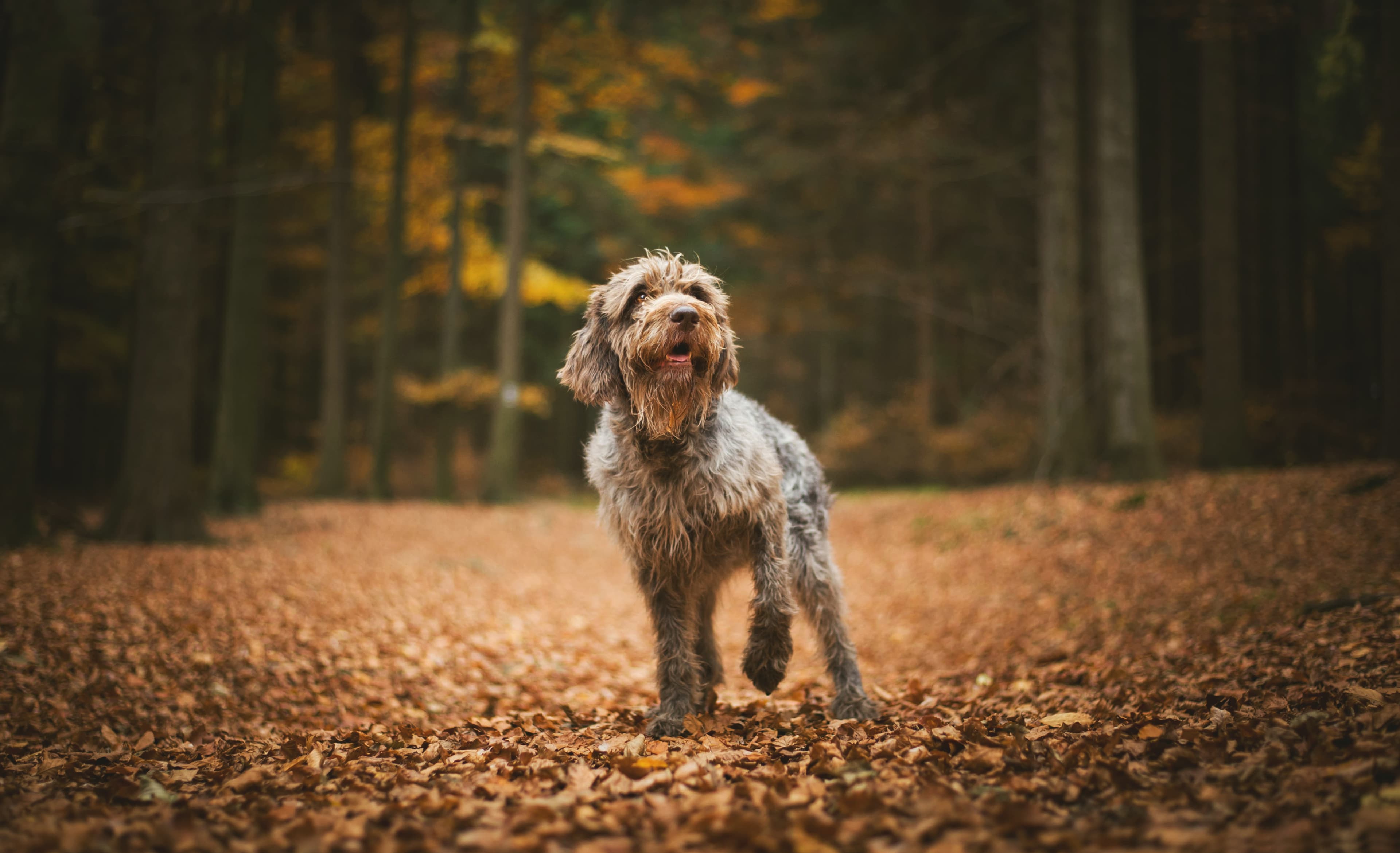Activity ideas for older dogs - Keep body and mind fit
If you rest, you rust – that also applies to our dogs! An old dog is by no means a thing of the past and will continue to be encouraged and challenged. But how can you keep a dog busy that is already physically showing signs of aging? Basically, we can distinguish between physical and cognitive activity. Most exercises combine both and require movement or mental work to a greater or lesser extent. As you get older, it is particularly worthwhile to challenge your dog physically and mentally – always within an appropriate framework, of course!
But what needs to be considered?
Let's first look at the physical exercise and activity of a senior dog. You should definitely pay attention to the following things:
Avoid hectic movements - the faster and more uncontrolled your dog moves, the higher the risk of injury. In old age, tendons, bones, and joints can't withstand as much as they could in their younger years! Therefore, ensure calm and controlled movements.
No abrupt stops! Hard stops such as when throwing a ball or jumping strain your dog's joints immensely. In old age, the motto is: less is more!
Consider the health condition! If your dog is already showing signs of aging or has illnesses, it is even more important to take these into account during physical activity. Consult with your veterinarian to determine how much exercise and exertion your dog can handle.
Pay attention to the temperature - heat and cold can have a significant impact on your dog. If your dog has a weak immune system or doesn't build up enough winter fur, a coat can support your dog during outdoor activities. Especially for joint diseases, protection from the cold is advisable. But summer heat can also pose risks. Make sure to provide enough water for your senior dog and monitor your dog's circulation during outdoor activities. Ideally, shift physical activity to the cooler morning and evening hours in the summer.
Now let's take a look at the mental work with your dog because there can be specific considerations in old age as well:
Keep it short and simple - to avoid overwhelming and demotivating your senior dog, you should always adapt training sequences to your dog's performance level (by the way, this applies to all age groups!). Start with short and simple exercises and gradually increase the difficulty. This way, your dog will always bring fun and motivation to the training and quickly learn new things.
Dementia in dogs! Your four-legged friend can also suffer from dementia in old age. This affects cognitive abilities and thinking capacity, making even simple tasks challenging for your dog. If you notice an unusual decline in your dog's mental performance, consult your veterinarian first!
Consider physical limitations! Perhaps your senior dog is already experiencing hearing or vision problems. In that case, you are particularly important in selecting exercises, as your dog should still have fun and success in training despite potential impairments. Try challenging your dog's other senses, so your dog learns new strategies.
Designing suitable conditions!
You're now ready to embark on activities with your senior dog and are looking forward to new engagements? Then don't forget to take a look at the conditions. Pay special attention to:
Ground surface: A too smooth floor can make it difficult for your dog and may lead to slipping. Since this poses a significant strain on bones, tendons, and joints, ensure a non-slip surface.
Noise level: You may need to speak signals louder in the future (or convert them into visual cues) if your dog already has hearing problems. In particularly noisy environments, your dog may have difficulty understanding you.
Activity ideas at home
Treat search: Have your dog wait in its place (if your dog doesn't know "stay," you can briefly leash him for this) and hide treats around the house. Once you're done hiding, let your dog search. At the beginning, choose very simple hiding spots and assist your dog if needed. Always make sure your dog can reach the hiding spots!
Trick training: Check out the article "Trick Training with an Older Dog" for this.
Chewing and licking: For independent home entertainment, chew bones or licking mats are particularly suitable. Pay attention to the dental condition of your senior dog. If your dog has healthy teeth, there's nothing against chew bones or a chewing toy. For poor dental health or missing teeth, licking mats are a great alternative! You can spread them with wet food, quark, or vegetable puree to keep your dog entertained for a while.
Activity ideas during walks
Utilize different surfaces: When you're out with your dog, you'll typically encounter various surfaces. Asphalt, leaf-covered ground, puddles, gravel, bridges, etc. - each surface provides an opportunity to stimulate your dog's senses. Walk together on the different surfaces you come across during your stroll. If your dog hesitates, you can motivate him with a treat and reward his bravery!
Off the beaten path: This exercise enhances coordination and can be particularly exciting for your dog because you can explore off the regular paths! Whether in the woods or on a meadow, there are plenty of opportunities off the path. Climbing over branches together strengthens muscles and coordination, adding excitement to the walk. (Please observe your community's regulations regarding breeding and nesting seasons.)
Search games: Whether with treats or toys - you can incorporate wonderful search games during your walk. Hide a treat or toy and let your dog go on a search. The different sounds and smells in nature provide additional distraction. Gradually increase the difficulty and start with an "easy" level.






